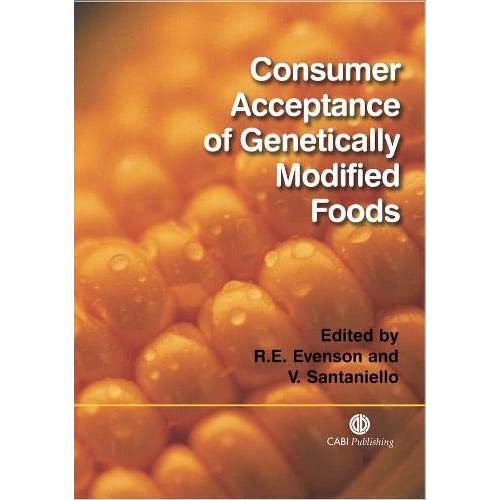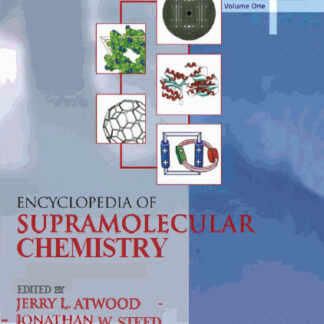Description
Consumer Acceptance of Genetically Modified Foods by Robert E. Evenson, ISBN-13: 978-0851997476
[PDF eBook eTextbook]
- Publisher: CABI; First edition (April 21, 2004)
- Language: English
- 288 pages
- ISBN-10: 0851997473
- ISBN-13: 978-0851997476
After almost 20 years in the laboratory and the experimental fields, agrobiotechnology arrived at the market in the mid-1990s and was quickly embraced by farmers in key agricultural producing countries. In 1996, less than 4 million acres in six countries were planted with bioengineered crops. By 2001, worldwide adoption expanded to more than 115 million acres (James, 2002). For some countries, including the USA, uptake of bioengineered crops has been so fast that prior adoption of even dominant agricultural technologies (e.g. hybrid maize) pale in comparison (Kalaitzandonakes, 2003).
Some consumers in Europe and in other parts of the world, however, have been sceptical and often combative towards the new technology (Gaskel et al.). Nothing has underscored the public acceptance woes of agrobiotechnology more strongly than the widespread bans imposed by food companies on genetically modified (GM) food ingredients in Europe and elsewhere. GM food bans began in Europe on 1 May 1998 when Iceland – a small UK food retail chain – announced that it had removed all GM ingredients from its private label products. Within a few months, similar announcements by large food retailers and food manufacturers poured in.
The most significant early announcement came from a consortium of seven major European food retailers on 17 March 1999. Led by UK-based Sainsbury’s, the consortium had formed to source non-GM ingredients for its members’ private label products. With over $100 billion in combined sales, 40% in private labels, the consortium’s announcement set the tone for a cascade of similar actions in the European food industry. By autumn of 1999, some key European food retailers and manufacturers had announced their intent to remove GM ingredients from their branded products.
Outside Europe, bans of GM food ingredients by major food companies were more sporadic. Starting in the autumn of 1999, a small number of large food manufacturers and retailers in Japan, Taiwan, the USA and other parts of the world announced intent to remove GM ingredients from their branded products.
Bans against GM food ingredients by major food companies have been broadly reported and have been often taken to signal demand shifts away from bioengineered commodities in favour of identity-preserved non-GM crops. Yet, the impacts of such bans have not been quantified and, indeed, the market size for non-GM crops remains unknown. In this study we assess the significance of bans imposed by major food companies against bioengineered commodities by investigating the response of commodity prices to such bans.
Assuming agricultural commodity futures markets are efficient, new information suggesting a possible demand shift should affect these markets. Thus, movements in agricultural commodity futures prices in response to reports on voluntary bans against bioengineered commodities by major food companies can provide an indirect account of the expected impacts of such announcements. Within this context, we empirically examine whether soybean futures market prices react to news about voluntary bans against bioengineered commodities by food firms. The Chicago Board of Trade (CBOT) soybean futures contract specification is for #2 yellow soybean of US origin of specific quality characteristics, e.g. test weight, damaged kernel. The CBOT soybean futures market represents the primary price discovery mechanism for soybeans in the USA. Ban announcements should produce sustained impacts on futures prices only if a shift in the demand for non-GMO soybean is sufficient to negatively influence the market for commodity- grade soybean.
We also investigate the impacts of GM ban announcements on the returns of non-GM soybean futures. The offering of the Tokyo Grain Exchange (TGE) non-GMO soybean futures contract allows analysis on such impacts. If the ban announcements signal significant demand shifts, then the TGE non- GMO soybean futures price should respond positively to the news.
This study builds on this rich event study literature and examines how soybean futures prices respond to announcements of bans against GM ingredients by major food firms. It also extends the previous literature in two ways. First, it investigates not only the immediate and separate impact of ban announcements but also their potential cumulative effects. Specifically, the hypothesis that each additional announcement might have a greater impact on markets than prior ones by signalling a progressively shifting market is explicitly tested. Second, this study examines the response of separate but interdependent market segments to such ban announcements – a major commodity market that can be diminished and a smaller specialized non-GM market that can be enhanced.
What makes us different?
• Instant Download
• Always Competitive Pricing
• 100% Privacy
• FREE Sample Available
• 24-7 LIVE Customer Support











